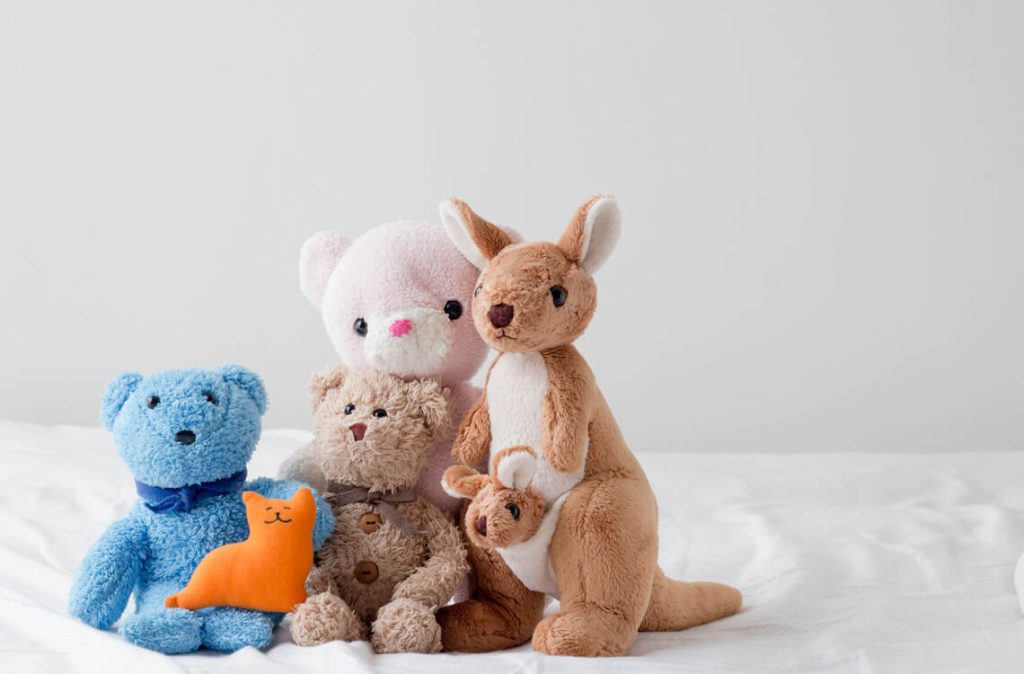We’ve all seen it before, maybe in your own home, maybe clutched in a toddler’s hand at the supermarket checkout.
A well-worn teddy bear with one eye missing; a fraying blankie dragged across the floor like a beloved sidekick.
It might look like just a stuffed toy or a piece of cloth to anyone else, but to the child holding it? It’s everything.
These cherished comfort items are what psychologists call transitional objects. And they’re far more than just sentimental fluff.
And for parents, understanding the magic behind these objects can offer surprising insights into a child’s emotional world.
What Exactly Is a Transitional Object?
The term “transitional object” was coined in the 1950s by paediatrician and psychoanalyst Donald Winnicott.
He observed that many children became deeply attached to certain toys, blankets, or even pieces of fabric.
Especially around the time they began to separate emotionally from their primary caregiver (usually their mum).
These objects serve a dual role: safety and reassurance.
In other words, transitional objects comfort and empower at the same time.
Like emotional training wheels, they offer security while encouraging self-reliance.
Why Kids Get Attached (and Why It’s a Good Thing)
If you’ve ever tried to wash your child’s favourite plush bunny only to be met with loud protests, you’re not alone.
It’s not just cute—it’s deeply rooted in developmental psychology.
Children don’t have the same coping mechanisms adults do.
When they feel scared, lonely, or uncertain, they look for something familiar to anchor them.
Transitional objects carry the scent, texture, and even emotional association of safety and love.
They can help soothe separation anxiety, make bedtime a little easier, and ease the stress of new environments.
Importantly, this attachment is also a key sign that a child is learning how to self-soothe.
By reaching for their special toy instead of running straight to mum or dad every time they’re upset, they’re practising emotional regulation.
Is It Healthy to Let Them Cling to That Ratty Old Toy?
In a word: Yes.
Most child psychologists agree that there’s nothing wrong with children forming strong bonds with comfort objects.
In fact, it can be an important part of healthy emotional development.
These attachments tend to fade on their own, often around age 5 or 6. This is when children have typically developed other ways of coping with stress.
Trying to force a child to give up their transitional object too early can actually backfire.
Instead of helping them “grow up”, it may increase anxiety and resistance.
So, if your child still needs their soft toy at night or insists it comes with them to grandma’s house, there’s no need to worry.
They’re doing exactly what they’re supposed to: learning to navigate their emotional world in a way that feels safe to them.
What Transitional Objects Teach Us
Perhaps one of the most beautiful ironies of transitional objects is that they symbolise both dependence and independence at the same time.
This lesson extends beyond childhood.
As adults, many of us still turn to “comfort items” to help us feel safe or confident in uncertain situations – a favourite jumper, a lucky charm, or even a specific playlist. That urge to connect with something familiar during times of stress never truly goes away.
And for parents? Watching your child carry around a stuffed bunny like it’s a life partner can sometimes feel a bit odd, but it’s also a glimpse into their inner emotional life.
That toy is a stand-in for your presence.
It means they feel loved enough to let go, even if just a little.
When to Worry (and When To Not)
Of course, like all things in parenting, there can be exceptions.
If your child seems overly dependent on their transitional object beyond early primary school, or if they’re experiencing extreme anxiety when it’s not around, it could be worth having a chat with a child psychologist.
But in most cases, these attachments fade naturally with time and emotional maturity.
The truth is, most of us move on from our blankies and bears. But we never really outgrow the emotional skills they helped us develop.
Transitional objects teach children how to be brave, how to find comfort within themselves, and how to carry a piece of home with them, wherever they go.
The Magic of Toys
So, the next time you trip over a stuffed giraffe on the stairs or find a beloved bunny peeking out of your child’s backpack, take a moment.
That scruffy little object is doing more than you think.
It’s a symbol of love, growth, and emotional resilience.
And who knows, maybe there’s a little magic in it after all!
Disclaimer: The information provided in this article is for informational purposes only and should not be considered as medical advice from Motherhood. For any health-related concerns, it is advisable to consult with a qualified healthcare professional or medical practitioner.
For more insightful stories and fun recipes, stay tuned to Motherhood Story!
